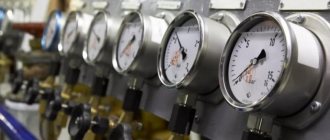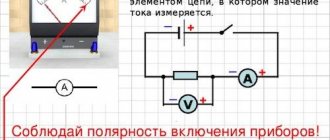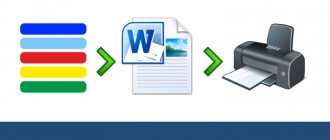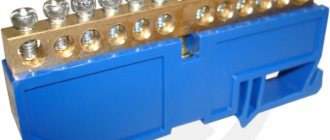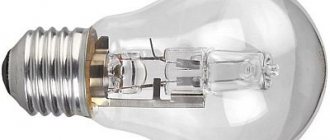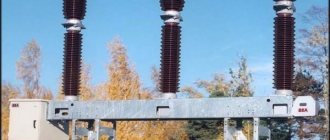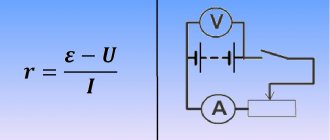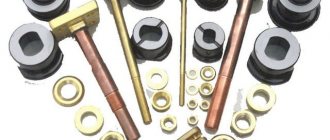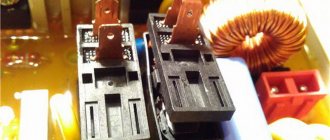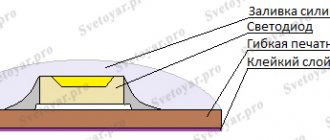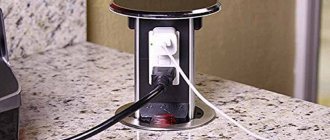Or take, for example, a meter for measuring the amount of moisture in grain. A person who has production is simply obliged to check his grain, otherwise he may lose all his reserves and go bankrupt.
Types of instrumentation
Now that it has become clear that the use of measuring instruments in some situations is simply necessary, it is worth considering the main types of instrumentation:
- thermometers. They are used to determine the heating of a substance or object, to determine the temperature inside a room, to control technological processes during construction, and so on;
- anemometers. Used to measure air speed and direction of its flow. They are used in the construction of ventilation, in air and ship transportation;
- lux meters. Check whether the lighting in the room meets all standards. Most often used to detect violations and for labor protection;
- sound level meters. From the name it becomes clear that the device measures noise levels and is used when checking workplace safety, testing acoustic systems, and the like;
- tachometers. Measure the number of revolutions a rotating object makes. Indispensable for measuring the speed of a car engine, for carrying out checks on conveyor lines and other industries where a violation of the rotation speed can lead to negative consequences;
- water quality meters. They can be used both to measure water quality at home and in production or during testing. Some meters are capable of testing water for several indicators at once;
- rangefinders. Most often, this electronic device is used in industries such as geodesy, construction, design, and the like. Today, almost all models are laser and have additional functions: determination of volume, area and other quantities;
- levels. Allows you to identify the difference in height between two points. Most often, such a tool finds its application in landscape design, in the construction of buildings in mining engineering and similar areas.
moisture meters. Measure the amount of moisture in solids, liquids and even gases. Widely used in industry, agriculture, construction work, etc.;
Purpose and classification of control and measuring instruments.
A measuring instrument is a device that serves to compare the measured value with a unit of measurement. Measuring instruments can be classified according to the following criteria: 1) the type of quantity being measured; 2) method of counting; 3) accuracy class and 4) purpose.
By the type of quantity being measured, control and measuring instruments are divided into the following main groups:
a) to measure temperature,
b) for measuring pressure and vacuum (vacuum),
c) for measuring the quantity and flow of liquids, vapors and gases,
d) for measuring levels of liquids and solids,
e) for qualitative measurements (density, humidity, gas composition, etc.).
According to the method of counting, devices are distinguished:
a) with manual aiming,
b) showing
c) self-writing,
d) summative,
e) signaling.
Instruments with manual aiming (also called comparating) include those in which, when measuring, the comparison of the measured value with samples or measures is carried out with the direct participation of a person (for example, weight scales, an optical pyrometer with a disappearing thread).
Indicating instruments at the moment of measurement indicate the value of the measured quantity; these values are determined visually using scales - the reading devices of the device using a pointer (arrow) moving along the scale (or using a rotating dial and a fixed pointer). By design, indicating instruments are divided into stationary (panel) and portable.
Stationary instruments serve for continuous monitoring of the measured value. Portable instruments are used either when measurements are made periodically or episodically with significant time intervals between measurements, or for checking stationary instruments.
Recorders automatically record measurement results on a moving paper tape or disk. This record is usually a line that shows how the value of the measured quantity has changed over time. Using this record (diagram), you can keep track of the consumption of raw materials or product output, judge whether the technological process was carried out correctly, and determine the cause of the equipment failure.
Summing devices (counters, integrators) show the total value of the measured quantity, which is usually determined by a counting mechanism. Counters allow you to take into account the amount of energy, steam, water, gas, etc. consumed.
When the measured value reaches the specified values, signaling devices give a light or sound signal.
The following instruments are manufactured according to their intended purpose: technical (or operational), control, laboratory, exemplary and reference.
Technical general industrial measuring instruments are working instruments used in production. They are simple in design, reliable in operation, equipped with clear scales with large digitization, and are manufactured for accuracy classes from 0.5 to 4.0.
Control and laboratory instruments are used for testing technical devices, as well as during commissioning and research work. Typically, control devices are used to check technical devices at the place of their installation, and laboratory devices are used in the laboratory premises. Control and laboratory instruments are manufactured with higher accuracy classes than technical instruments, namely 0.5 and 1.
1.1Instrumentation and measuring instruments can be classified according to the following main characteristics: by the type of quantity being measured, by the method of obtaining information, by metrological purpose, and by location.
According to the type of quantity being measured, instruments for measuring temperature, pressure, quantity and flow, level, composition, and state of matter are distinguished.
According to the method of obtaining information, devices are divided into indicating, recording, signaling, comparating, and regulating.
Indicating devices enable the observer to obtain the value of the measured quantity at the time of measurement on a reading device (scale with a digital pointer, pen with a diagram). Scale reading devices, the main elements of which are a scale and an indicator, have become widespread. Marks with numbers corresponding to the values of the measured quantity are applied to the scale along a straight line or along an arc of a circle. The mark of the smallest value is the beginning of the scale, the largest is the end of the scale. The difference between the start and end is called the scale range. The distance between two marks is called a scale division, and the value of one division is called the price. Scales in which the length and value of divisions do not change throughout the entire range are called uniform, and scales with different lengths and values of divisions are called uneven.
Scales are divided into one- and two-sided. In the first, the zero mark coincides with the beginning or end of the scale, in the second, the marks are located on both sides of the zero.
Along with scale reading devices, digital reading devices are used, which make it possible to obtain the measurement result in the form of a numerical value of the measured quantity. They significantly reduce the number of gross errors when reading and speed up the reading of instrument readings.
Indicating instruments constitute the largest group of instruments that are widely used in technological measurements of parameters of food production processes.
Recording instruments are used to automatically record measurement results on a special paper tape or disk (diagrams). The diagram is recorded with a pen in the form of a continuous line or a periodic printing mechanism and shows the change in the controlled value over time. By recording the readings, it is possible to carry out subsequent analysis of the measurement results over a certain period of time. They allow you to monitor the work of personnel managing technological processes and help configure regulators.2.2
Recording instruments are especially important for such measurements where it is necessary to know the change in the controlled parameter throughout the entire process, for example, the temperature of the coolant during distillation.
Signaling devices have special devices for activating a sound or light alarm when the measured value reaches a value that causes a violation of the specified process parameters.
Summing devices show the total value of a quantity over an entire period of time. In these devices, counters are built into the same housing with an indicating or recording device and have one common measuring system with it.
Comparing devices are used to compare the measured value with the corresponding measures. An example is a lever scale with weights.
Control devices are equipped with devices for automatic control based on the values of the measured quantity.
According to their metrological purpose, instruments are divided into working, exemplary and reference.
Working instruments are divided into technical and laboratory. The first ones are intended for practical measurement purposes, while a certain accuracy is guaranteed by the manufacturer. Amendments to their testimony are usually not made. Laboratory tests are more accurate because they take measurement errors into account. They are more advanced in design. Laboratory instruments are used to verify technical devices and control products.
Model instruments are used to verify working instruments.
Reference instruments are designed to reproduce a unit of measurement with the highest achievable accuracy.
Based on location, local and remote devices are distinguished.
Local instruments are installed directly at or near the site (for example, glass thermometers, hydrometers).
Remote devices are used to transmit the measured parameter over a distance. They consist of primary and secondary devices.
Device of control and measuring instruments
Each type of control and measuring instruments has a unique design, but they still have something in common.
Each of the instruments has a housing, a screen to display the results, a battery and a specific mechanism that helps the tester do its job. Most often, parts in devices are replaceable and if they break down, they can be easily replaced with new ones. In some cases, professional assistance or complete replacement of the device may be required.
To summarize, it is worth saying that each of the listed types of control and measuring devices is unique and can hardly be replaced by any other device. Therefore, the purchase of such a device should be approached with special responsibility.
Simplified classification of instrumentation
It is customary to divide all control and measuring instruments into the following classes:
- protozoa;
- digital;
- analog.
The simplest instruments include rulers and protractors, which are familiar to every schoolchild. Scales and calipers are also classified as simple instrumentation. The advantage of digital instruments is their high level of accuracy.
The fact is that the device converts the measured physical quantity into an electrical signal. An example of such a device is an oscilloscope.
Analog instrumentation are devices that measure a specific parameter continuously (do not require additional resources for operation). This includes mercury thermometers, pressure gauges, etc.
Instrumentation
Instrumentation and measuring instruments are designed to monitor the operation and condition of individual systems, units and the vehicle as a whole. Such control makes it possible to take timely measures to maintain the vehicle’s performance and its trouble-free operation.
Control and measuring instruments are divided into indicating and signaling.
Indicating instruments have a scale and a pointer. To evaluate the transmitted information, the driver must look at the scale and understand the readings.
Signaling devices react to one value of the measured parameter and inform about it with a light or sound signal.
The control and measuring device consists of a sensor and an indicator. The sensor is installed at the control point, and the indicator is installed at the observation point (in the cabin). In signaling devices, the indicator is a signal lamp.
According to their purpose, all control and measuring instruments are divided into groups: measuring temperature (thermometers), measuring fuel level, monitoring the charging mode of batteries, measuring vehicle speed and distance traveled (speedometers), measuring rotation speed (tachometers).
Temperature control devices. The sensor of such a device (see Fig. 80.) is a brass cylinder, in the outer part of which there is a hexagon wrench and a thread for fastening. Inside the cylinder there is a thermistor 5 and a spring 3. Between the wall of the cylinder and the spring there is an insulating sleeve 4. The thermistor has the property of reducing resistance as the temperature increases.
Rice. 80. Temperature control devices: a - temperature indicator sensor; b - cross section of the indicator; c - electrical circuit of the pointer; d — alarm temperature alarm sensor; 1 - screw; 2 — brass cylinder; 3- spring
Analog and digital
Instrumentation and instruments are divided into analog and digital. The second type is more popular, since various quantities, for example, current or voltage, are converted into numbers and displayed on the screen. This is very convenient and the only way to achieve high accuracy of readings. However, it is necessary to understand that any digital instrumentation includes an analog converter. The latter is a sensor that takes readings and sends the data to be converted into a digital code.
Analogue measuring and control instruments are simpler and more reliable, but at the same time less accurate. Moreover, they are mechanical and electronic. The latter differ in that they include amplifiers and value converters. They are preferable for a number of reasons.
Instrumentation maintenance
The correct and efficient operation of the entire production depends on the quality of the control and measuring equipment. Therefore, these devices must be reliable, trouble-free, maintainable, and serve for a long time.
In order to avoid breakdowns, system shutdowns or errors during measurements, instrumentation systems require regular technical and preventive measures. Verifications are carried out that show the reliability of the final data of the device. Craftsmen must monitor the storage conditions and condition of the measuring equipment, wipe the scales, dials and signal sensor sockets with a dry cloth.
The correct choice of measuring equipment helps ensure reliable operation and quality service of all managed systems.
Maintenance of measuring devices
Sometimes a lot depends on the quality of instrumentation, so these devices must have such characteristics as reliability, durability, reliability and be accessible for repair.
To avoid errors in measurements, instrumentation requires timely preventive maintenance and regular checks for the reliability of indicators. The technician must monitor the condition and storage conditions of the measuring devices, wipe the dials, scales and signal sensor sockets with a dry cloth.
Before starting work, you need to make sure that the connections are tight and it is advisable to make a control measurement. Faulty devices must be promptly replaced with new ones or repaired in a timely manner.
At large enterprises, there are entire teams and departments of engineers and instrumentation mechanics who monitor the condition and serviceability of instruments and automation.
At the everyday level, we often come across various measuring devices . They have become familiar and commonplace, but they also require proper handling and compliance with safety regulations. The simplest sensor in a washing machine can cause a lot of trouble if it malfunctions. The temperature sensor on household irons is located on the heated surface and will provide unreliable data if it is normally dirty.
With proper care and storage of control and measuring devices, any life, repair, or vacation becomes easier and more enjoyable.
Measuring equipment for gas and liquid
The testing and measuring equipment that our company offers is designed for gases and liquids - perhaps the most dangerous resources that can be used in production. At oil refineries, chemical laboratories, boiler houses, and so on, it is necessary to carefully control the flow of liquids and gases, since they may contain explosive and toxic substances. Our flow meters allow you to always keep the situation under control and prevent leaks and exceeding the indicators.
